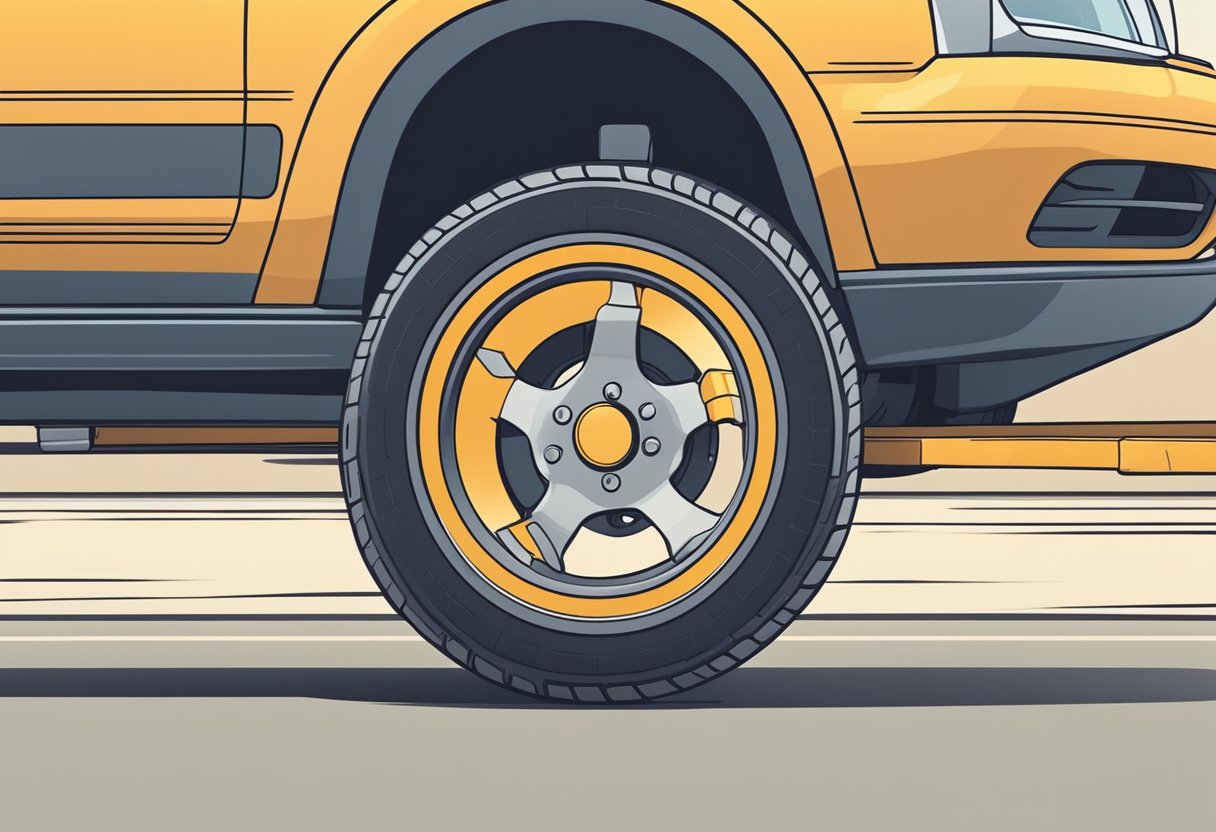When a car’s wheels are properly aligned, they all point in the right directions and work in harmony for smooth, straight travel.
But when alignment issues crop up, the signs are hard to miss. These symptoms can range from obvious steering troubles to more subtle indicators.
Yet, no matter how minor they may seem, issues with wheel alignment can have a domino effect, impacting driving comfort and undermining vehicle safety.
Fixing common bad wheel alignment symptoms typically involves performing a wheel alignment service. The cost of a wheel alignment can range from $65 to $100 for a standard alignment and up to $200 for a more complex or thorough alignment, as reported by J.D. Power.

One tell-tale sign of bad wheel alignment is when a vehicle pulls to one side rather than cruising straight. This can turn a relaxing drive into an ongoing struggle with the steering wheel.
Also noteworthy are uneven tire wear patterns, hinting that the wheels are not connecting with the road as they should be. Each of these symptoms poses a unique challenge, making wheel alignment an important aspect of car maintenance not to be overlooked.
Vibrations in the steering wheel provide another clue; they often mean it’s time to check the alignment. When wheels are out of sync, the tug of war between them can send shudders through the steering column, making it clear that something’s off.
Addressing wheel alignment promptly can restore the balance, offering a smoother ride and ensuring the car handles as expected – factors essential for a safe and comfortable driving experience.
Do Bad Wheel Alignment Symptoms Overlap with Symptoms of Catalytic Converter Failures?
Do bad wheel alignment symptoms overlap with symptoms of catalytic converter failure? While both issues can cause car troubles, they are unrelated. Bad wheel alignment symptoms include uneven tire wear and steering pulling. On the other hand, catalytic converter failure symptoms consist of reduced engine performance, decreased fuel efficiency, and increased emissions. Differentiating between the two is crucial for accurate car diagnosis.
Recognizing Common Signs of Poor Wheel Alignment

When a vehicle’s wheels are out of alignment, it can lead to noticeable issues with tire wear and overall control during driving. Here are two critical aspects to watch for that may indicate your car’s wheels need realignment.
1. Visible Tire Wear and Handling Issues
One of the clearest indicators of poor wheel alignment is uneven tire wear. Tires may show patterns of wear such as bald spots or scalloping, which not only shorten the life of the tires but also affect the vehicle’s handling.
A car with alignment issues might also exhibit handling difficulties, such as pulling to one side while driving or a sense of steering hesitation when making turns.
2. Steering Troubles and Vehicle Control
A sloppy or loose steering wheel is another sign that a vehicle’s wheel alignment needs checking. Symptoms can include:
- Steering wheel vibrates: You may feel the steering wheel shaking, especially at higher speeds.
- Off-center steering wheel: When driving straight, the steering wheel shouldn’t be tilted to one side.
- Squealing tires: They often make noise when cornering, signaling a potential alignment problem.
Root Causes and Impact of Misalignment

1. Driving Conditions and Wear on Components
Poor wheel alignment often stems from driving conditions and the usual wear and tear on vehicle components.
Potholes and curbs are infamous for contributing to misalignment. Heavy impact when hitting these obstacles can throw off the wheel’s camber, toe, and caster angles, key elements in wheel alignment.
Over time, components of the suspension system like bushings and ball joints wear out, leading to misalignment.
Regularly submitting a vehicle to these conditions without proper maintenance can necessitate more frequent alignment checks to avoid worn parts and overdue re-alignment.
2. Effects on Fuel Efficiency and Overarching Safety
Misalignment can lead to poor gas mileage due to increased rolling resistance. Low tire pressure compounded with poor alignment makes the issue worse, as the vehicle requires more energy to move forward, thus consuming more fuel.
From a broader safety perspective, poor alignment can lead to a diminished driving experience, including instability at high speeds and an impaired ability to steer effectively in an emergency.
In extreme cases, this can increase the risk of accidents. Given the alignment cost is typically lower than the aggregated extra spend on fuel and tires over time, not to mention the potential cost of an accident, keeping wheels correctly aligned is both economically and safety-wise a wise decision.
As an Amazon Associate we earn from qualifying purchases.











I’ve noticed my car has been pulling to one side lately, and I suspect it might be an alignment issue. How do I know for sure if it’s an alignment problem or something else?